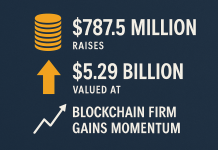[ad_1]
On October 3, the price of Tether fell by more than 1 percent, creating a premium on crypto exchanges for traders purchasing major digital assets like Bitcoin with the stablecoin.
In an exclusive interview with CCN, respected cryptocurrency trader and analyst Alex Krüger stated that Tether will likely not crash in the short-term, but the possibility of it imploding is always there due to its unregulated status.
For the long-term growth of the crypto sector, Krüger stated that the emergence of new audited, regulated, and licensed stablecoins will provide more stability to the market, allowing it to mature and strengthen its infrastructure.
Importance of New Stablecoins
Over the past few months, as the world’s largest cryptocurrency exchange Binance CEO Changpeng Zhao said, the crypto market has seen the emergence of four new competitors to Tether (USDT), a stablecoin backed by the US dollar that has had absolute dominance over the industry for many years.
Current fiat backed stable coin global 24hr volumes:
Tether: $2.3B
TrueUSD: $9.4M
PAXOS: $3.7M (Regulated, and only recently listed on Binance for a few days)
Gemini Dollar: $79K
USDC: unknownLearn about them and choose for yourself.
— CZ Binance (@cz_binance) October 7, 2018
Trusted US-based exchange Gemini, Goldman Sachs-backed Circle, and Andreessen Horowitz-supported TrustToken, and Paxos released GUSD, USDC, TUSD, and PAX, four new audited, regulated, and Ethereum-based stablecoins.
Tether, despite various controversial reports and claims from experts, has not imposed a negative impact on the sector. But, the lack of regular audits and the lack of clarity on its bank deposits have led to intensified speculations on the viability and legitimacy of the stablecoin.
Hence, when the value of Tether sharply dropped by 1 percent this month to $0.99, it led traders to be concerned in regards to the short-term trend of the market and the possible effect it may have on the price of major cryptocurrencies.
At the time, analysts attributed the decline in the price of Tether to the wild sell-off of the stablecoin on major cryptocurrency exchanges. Eventually, the price of USDT recovered back to $1.
Speaking to CCN, Krüger stated that Tether will not have a major impact on the cryptocurrency market in the months and years to come as stablecoins with less credit and regulatory risk get rolled out across major digital asset trading platforms.
“Both Gemini and Circle are US based regulated issuers and thus perceived as more trustworthy, carrying lower credit risk. One should expect a great percentage of all USDT (Tether) holdings to migrate to GUSD (Gemini) and USDC (Circle),” Krüger said.
One important element of the newly emerging stablecoins is that unlike Tether, stablecoins that are redeemed for USD are destroyed by the issuers. But with Tether, the issuer takes the coins out of circulation. As such, it is virtually impossible to know whether Tether can simply move the coins back into circulation in the future.
As for last week, Krüger stated that the decline in the price of Tether could have had an impact on the price of Bitcoin. But, it was only a short-term price movement and the rest of the market recovered from it.
“Funds moving to BTC have clearly helped support BTC. Those funds into BTC should be temporary only, and eventually move to GUSD or USDC. unless this event causes a breakout and thus a positive feedback loop,” he explained.
Where Crypto Goes Next With New Stablecoins
Tether is said to have inflated the price of Bitcoin by inflating its supply of USDT. In 2018, Tether released its first transparency report which explicitly disclosed its holdings to be over $2 billion. Thus, it can be reasonably said that Tether LLC has not inflated its supply to increase the price of Bitcoin.
But, as Krüger emphasized, the small loopholes in the structure of Tether and its unregulated nature cannot positively affect the cryptocurrency market.
Krüger said:
“I don’t see USDT crashing regardless, but the possibility is always there. It represents one of those cases where a little of something can be good, yet a lot would be a disaster. Like drinking water. For a person, pouring two glasses down in ten minutes would be healthy, yet being forced to drink fifty glasses in ten minutes would likely impose significant damage.”
In a period in which the cryptocurrency market is being institutionalized by the likes of Coinbase, BitGo, TD Ameritrade, Citigroup, and Goldman Sachs, it is fitting to see regulated, licensed, audited, and transparent stablecoins being introduced to the market.
Images from Shutterstock
Follow us on Telegram or subscribe to our newsletter here.
• Join CCN’s crypto community for $9.99 per month, click here.
• Want exclusive analysis and crypto insights from Hacked.com? Click here.
• Open Positions at CCN: Full Time and Part Time Journalists Wanted.
Advertisement
http://platform.twitter.com/widgets.js
[ad_2]
Source link





